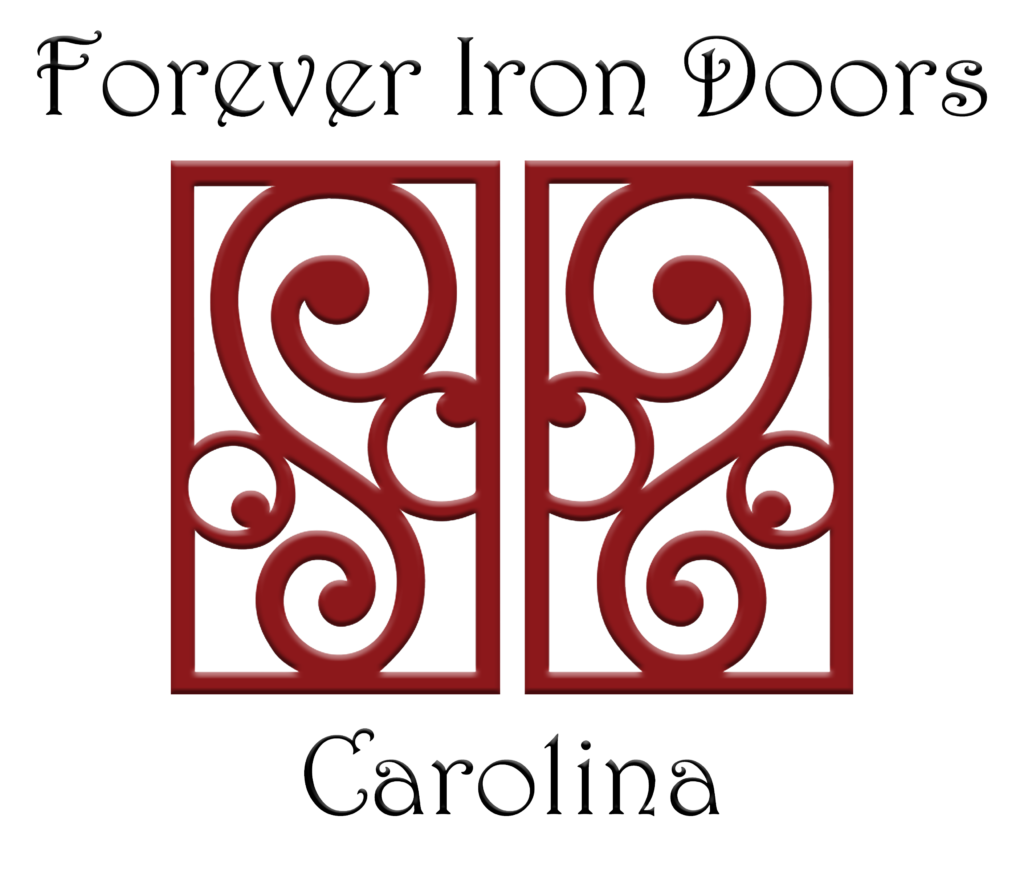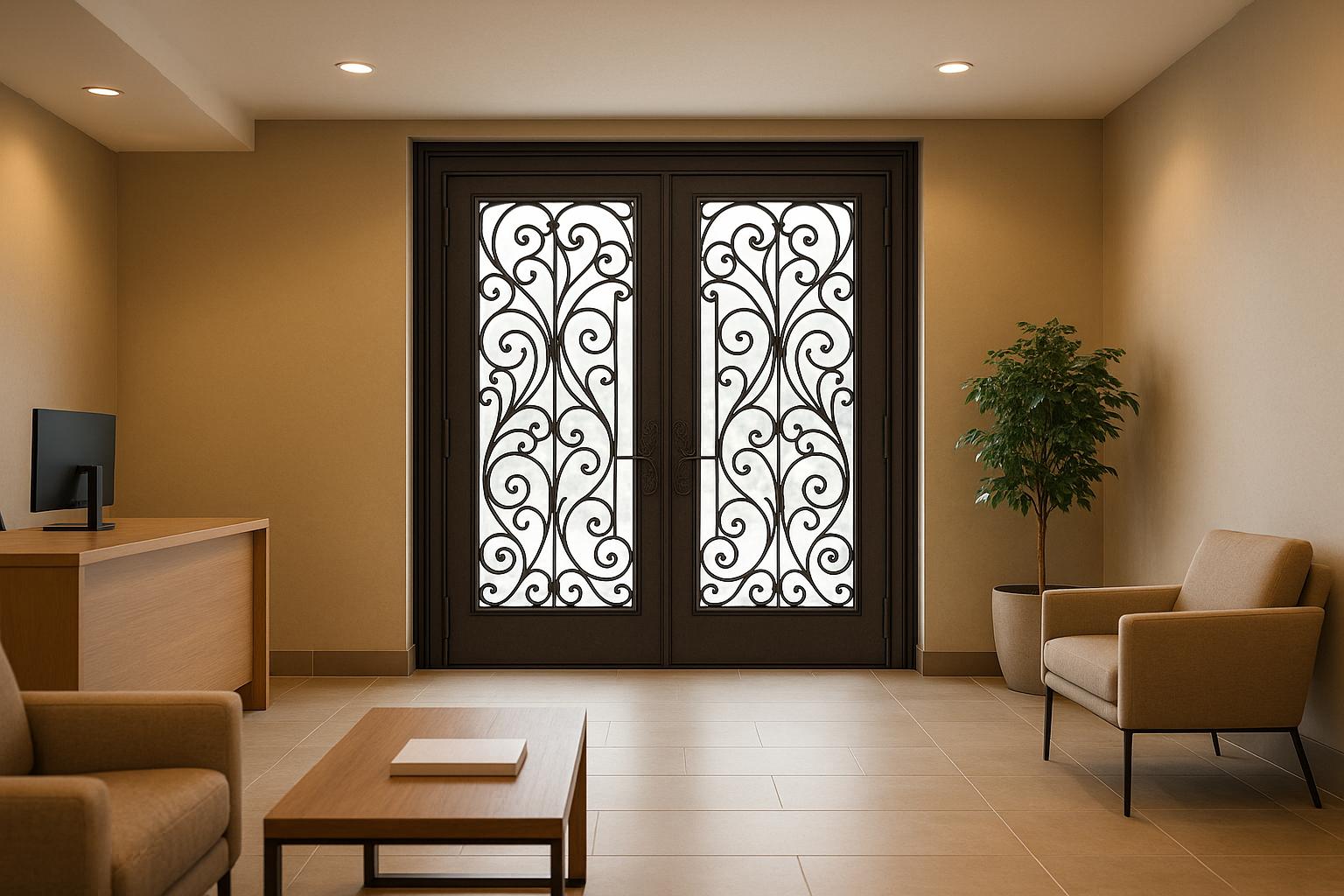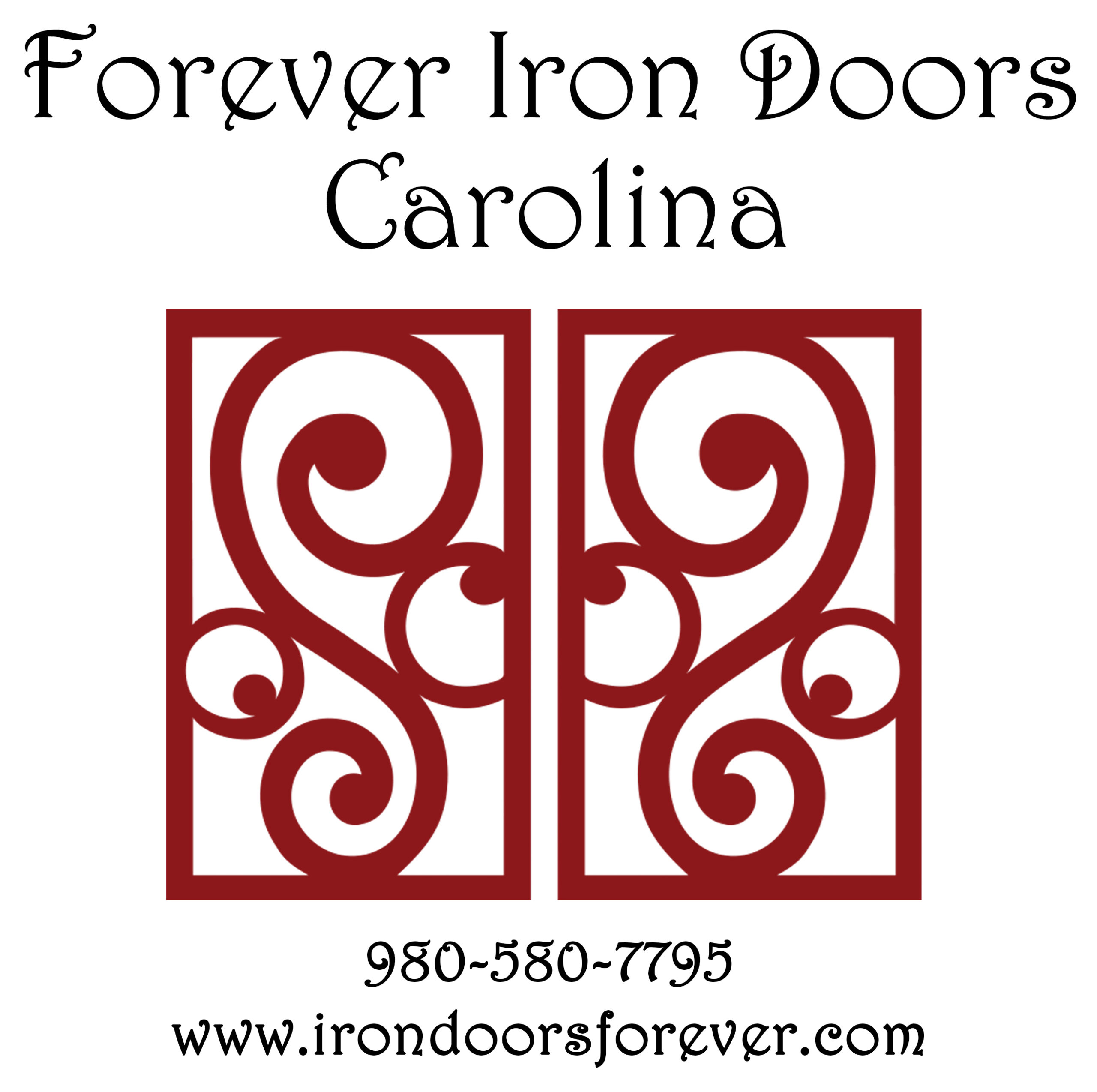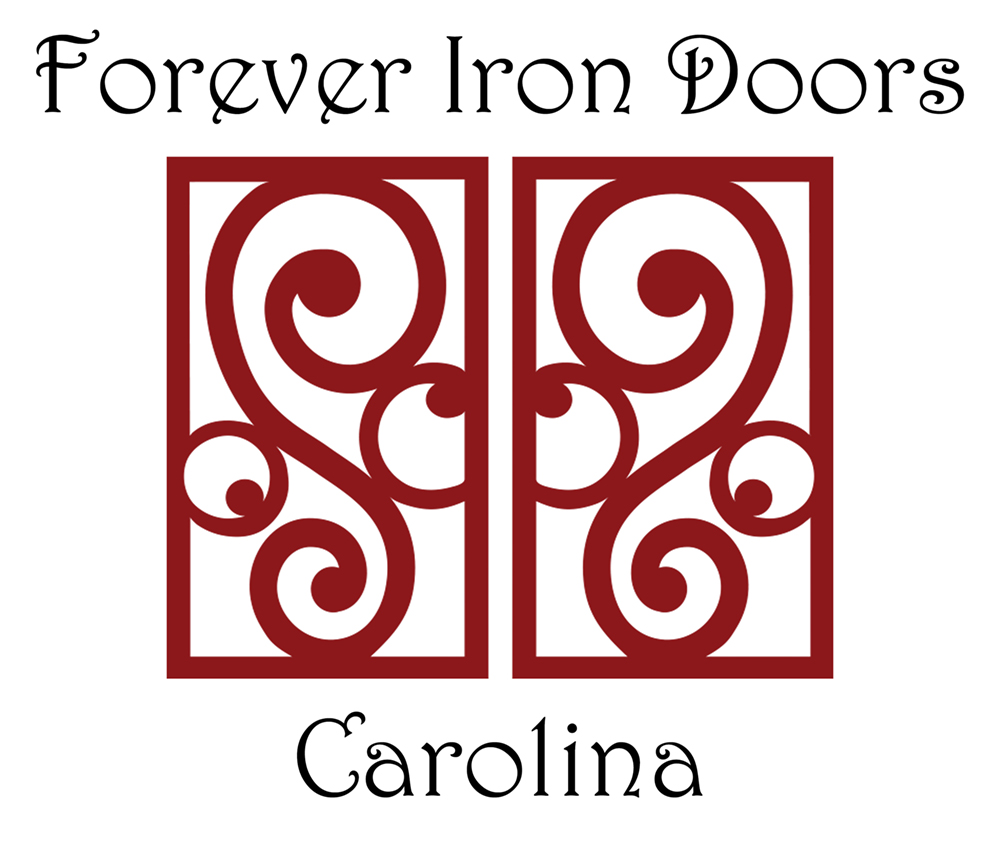Modern wrought iron doors are an effective way to reduce energy costs in office buildings. They combine advanced insulation technologies, such as polyurethane foam cores, thermal breaks, and weatherstripping, to minimize heat transfer and air leakage. These features help maintain stable indoor temperatures, cut HVAC energy use by up to 30%, and lower energy bills.
Key benefits include:
- Insulation Performance: R-values exceeding 20 and U-factors as low as 0.24 outperform wood, steel, and fiberglass doors.
- Durability: Resistant to warping, cracking, and heavy use, with minimal maintenance needs.
- Climate Suitability: Ideal for regions with temperature extremes, like North and South Carolina.
- Custom Options: Glass types, finishes, and hardware can align with office branding.
Proper installation is crucial to maximize these benefits, ensuring a tight seal and long-term performance. While wrought iron doors may have a higher upfront cost, their energy savings and longevity make them a cost-effective choice for office spaces.
How Wrought Iron Doors Save Energy
Modern wrought iron doors are more than just decorative – they now include features that help reduce heat transfer and air leakage, making them an energy-efficient choice.
Insulated Core Design
One of the key reasons wrought iron doors are energy-efficient is their polyurethane foam core. This foam acts as a barrier between the interior and exterior metal layers, significantly improving thermal resistance. For comparison, traditional solid wood doors typically have R-values between 3.03 and 3.70, while standard insulated steel doors reach R-values of 5–6. In contrast, high-quality wrought iron doors can achieve R-values of 20 or more. This insulation helps maintain a stable indoor temperature, reducing heat gain during the summer and heat loss in the winter. As a result, HVAC systems don’t have to work as hard, which can lead to lower energy bills.
Thermal Breaks and Weather Sealing
Thermal breaks are another essential feature. These are continuous barriers, often made of non-conductive plastic, placed between the interior and exterior metal surfaces of the door and its frame. Without these breaks, metal can easily conduct heat, allowing energy to escape. By preventing this heat transfer, thermal breaks are especially useful in areas with extreme temperatures.
In addition, high-quality weatherstripping seals the door’s edges, protecting against drafts and moisture. Together, thermal breaks and weatherstripping can reduce the energy lost through doors and windows by up to 25%. These features ensure the door maintains consistent indoor temperatures, but their effectiveness depends heavily on proper installation.
Proper Installation Methods
Even the most advanced wrought iron doors won’t perform well if they’re not installed correctly. A proper installation ensures a tight, gap-free fit that prevents energy loss.
The process starts with ensuring the door’s framing is strong enough to support its weight and stay aligned over time. As Forever Iron Doors Carolina explains:
"We want to make sure your home’s framing is structurally sound and your new iron door is level and operating smoothly. We’ll also make sure that the molding and caulk is applied professionally and in proper working order."
Applying molding and caulk around the door frame adds an extra layer of protection, sealing off any potential air leaks. Additionally, making sure the door is perfectly level and aligned eliminates gaps that could compromise the insulation and thermal breaks. Professional installers use precise tools and techniques to ensure the door fits snugly, maximizing its energy-saving capabilities.
When installed with care, wrought iron doors not only enhance energy efficiency but also provide reliable long-term performance, making them a practical choice for maintaining comfortable indoor climates in both homes and offices.
Wrought Iron vs Other Door Materials: Energy Performance
When it comes to office energy efficiency, knowing how different door materials perform is key. Recent findings highlight that modern wrought iron doors deliver R-values exceeding 20 and U-factors as low as 0.24, showcasing their impressive thermal insulation capabilities.
R-Values and U-Factor Comparison
To better understand insulation performance, here’s a look at how various door materials stack up:
| Door Material | R-Value Range | U-Factor Range | Energy Performance |
|---|---|---|---|
| Wrought Iron (modern) | 20+ | 0.24 | Excellent |
| Fiberglass | 5–7 | 0.20–0.30 | Good to Excellent |
| Steel (insulated) | 5–6 | 0.20–0.25 | Good |
| Wood (solid) | 3.0–3.7 | 0.30–0.50 | Moderate |
The R-value measures how well a material resists heat flow – higher numbers mean better insulation. Meanwhile, the U-factor indicates heat transfer, with lower numbers being more efficient. For instance, insulated steel doors generally offer R-values between 5 and 6, while solid wood doors fall between 3.0 and 3.7. Fiberglass doors perform slightly better, with R-values ranging from 5 to 7.
These metrics, paired with the durability of wrought iron, make them a standout choice for addressing modern office energy needs.
Long-Term Durability and Maintenance
Energy efficiency goes hand-in-hand with durability. Wrought iron doors are known for their resilience and require minimal upkeep – usually just occasional cleaning and rust prevention. On the other hand, wood doors are prone to warping, cracking, or rotting in humid conditions, often requiring regular refinishing. Any gaps that form in wood doors further diminish their already modest insulation. Steel doors are durable but can dent and corrode over time, which can impact their structural integrity. Fiberglass doors resist weathering well and need less maintenance, yet they may not last as long as wrought iron doors over a typical office lifecycle of 20–30 years.
Although wrought iron doors might have a higher upfront cost, their extended lifespan and minimal maintenance often result in a lower total cost of ownership. For offices in regions like North and South Carolina – with hot summers and mild winters – the superior insulation and sealing of wrought iron doors help maintain consistent indoor temperatures and reduce cooling demands. Unlike wood, they are less affected by weather extremes, making them a practical choice for these climates.
With their excellent thermal performance and durability, modern wrought iron doors offer a long-term energy-efficient solution for office spaces.
Office Benefits of Wrought Iron Doors
Wrought iron doors bring more than just a touch of elegance to commercial offices – they also provide practical advantages. From cutting energy costs to boosting security and adding a professional appearance, these doors are a smart choice for office spaces.
Climate-Based Energy Savings
Office buildings in various climate zones face different energy challenges, and wrought iron doors are designed to tackle these effectively. Thanks to features like insulated cores and thermal breaks, these doors help maintain consistent indoor temperatures by reducing heat transfer. This means less strain on HVAC systems and lower energy bills – whether you’re battling the summer heat or winter chill.
For example, in states like North and South Carolina, where summers can be scorching and winters can get chilly, these doors make a noticeable difference. Their superior insulation can cut heating and cooling losses by as much as 25%. This energy efficiency doesn’t just save money; it also complements the doors’ aesthetic and security perks.
Appearance and Security Benefits
Wrought iron doors are more than just functional – they make a statement. Their striking designs create impressive entryways that leave a lasting impression. As Forever Iron Doors Carolina puts it:
Enhance your home’s entrance with stunning custom iron doors that blend architectural beauty with superior strength.
This blend of style and strength is especially valuable for professional settings, where first impressions matter. Beyond their visual appeal, these doors are built to withstand forced entry attempts, providing an extra layer of security for businesses. Their durability and timeless design make them a reliable choice for offices where both appearance and protection are essential.
Custom Options for Office Requirements
Customization takes the benefits of wrought iron doors to another level, making them adaptable to any office layout or need. Offices can choose from a variety of glass options to suit their specific requirements. Clear glass panels invite natural light and create an open feel, while frosted or reeded glass ensures privacy for spaces like conference rooms or executive offices. For even better energy efficiency, double- or triple-paned low-E glass options are available.
Beyond glass, offices can select finishes, colors, and hardware that align with their corporate branding. Forever Iron Doors Carolina works closely with businesses in North and South Carolina to create tailored solutions that meet both functional and aesthetic needs, all while adhering to local building codes and climate demands.
Wrought iron doors are also built to endure the heavy use typical in office environments. Unlike other materials that may warp or deteriorate over time, these doors require minimal maintenance, leading to lower long-term costs. Their durability and low upkeep make them a practical investment for busy office spaces.
sbb-itb-cd90297
Office Case Studies: Wrought Iron Door Results
The performance of wrought iron doors in commercial office settings offers clear, measurable proof of their energy-saving potential. These real-world examples highlight notable improvements in energy efficiency and overall building performance.
Measured Energy Savings Results
Several office buildings have recorded substantial energy savings after upgrading to modern wrought iron doors with energy-efficient features. Businesses that replaced outdated, uninsulated doors with insulated wrought iron models reported up to a 12% reduction in heating and cooling costs, as confirmed by utility bill reviews and energy audits.
One standout example is the Iron Lion Entries project completed in 2022 for a mid-sized office building in Atlanta, Georgia. The retrofit involved replacing old wooden doors with insulated wrought iron doors equipped with kerf weatherstripping and triple-sputtered low-E glass. Over the following year, the building achieved a 17% reduction in HVAC energy costs and experienced less air leakage, as verified through blower door testing overseen by Facilities Manager John Miller.
Another example took place in 2023 when Palm City Iron Works installed custom wrought iron doors for a law office in Charlotte, North Carolina. These doors were designed to meet local energy codes, resulting in a 15% drop in annual heating and cooling expenses. Staff and clients also praised the improved security and aesthetics.
These examples emphasize that precise installation and high-quality components are key to maximizing energy efficiency. The most effective installations used insulated polyurethane cores and premium weatherstripping to minimize air leakage. Additionally, these doors achieved U-factors between 0.25 and 0.40, making them competitive with or even better than many steel and fiberglass alternatives.
North and South Carolina Office Considerations
In the humid subtropical climates of North and South Carolina, wrought iron doors with energy-efficient features have proven especially effective. The region’s hot, humid summers and mild winters make air sealing and insulation critical for reducing cooling and heating costs.
Wrought iron doors with low U-factors and quality weatherstripping help limit heat gain during the summer and heat loss during the winter, optimizing energy performance for the local climate. These doors also comply with the International Energy Conservation Code (IECC) and state-specific regulations, ensuring they meet or exceed energy performance standards. Proper installation is essential to passing local inspections and achieving the desired energy savings.
Forever Iron Doors Carolina has collaborated with businesses across North and South Carolina to design and install custom wrought iron doors tailored to local energy efficiency needs. These projects often involve site-specific consultations, advanced insulation options, and adherence to building codes, delivering noticeable energy savings and improved building performance.
Customizations like advanced glazing and thermal enhancements further boost energy efficiency in the region. Offices that opted for these upgrades in high solar exposure areas reported even greater energy savings. The combination of proper materials, skilled installation, and climate-specific features has helped Carolina businesses lower energy costs while enjoying the security and aesthetic appeal of wrought iron doors.
Summary: Wrought Iron Doors for Office Energy Efficiency
Wrought iron doors are a smart investment for commercial office spaces aiming to cut energy costs while boosting security and creating a professional appearance. With modern insulation technologies, these doors not only help reduce energy consumption but also offer a range of other practical benefits.
Thanks to advanced features like polyurethane foam cores, thermal breaks, premium weatherstripping, and double- or triple-paned Low‑E glass, modern wrought iron doors achieve impressive energy performance. With R-values exceeding 20 and U-factors as low as 0.24, they can cut HVAC energy use by up to 30%.
In addition to energy savings, wrought iron doors stand out for their unmatched security and durability compared to wood or aluminum alternatives. Their solid construction resists forced entry, while powder-coated finishes ensure long-lasting protection against fading. This durability translates into lower maintenance and replacement costs over the years.
A precise, gap-free installation further enhances thermal efficiency, ensuring maximum energy savings.
For offices in North and South Carolina, wrought iron doors are especially well-suited to the region’s humid subtropical climate. With hot summers and mild winters, effective air sealing and insulation are critical to controlling energy expenses. Forever Iron Doors Carolina specializes in creating custom solutions tailored to local building codes and climate conditions, helping businesses optimize energy efficiency.
Customization options make it easy to balance performance with style. Businesses can choose from various glass types, finishes, and hardware to design entrances that align with their brand identity. Whether it’s a law office or a corporate headquarters, wrought iron doors offer the versatility to meet both functional and aesthetic needs.
When considering the total cost of ownership, wrought iron doors prove their worth. Reduced energy bills, minimal upkeep, and a long lifespan make them a cost-effective choice. For businesses prioritizing sustainability and long-term performance, these doors deliver a strong return on investment by lowering operational costs and enhancing property value.
FAQs
Are wrought iron doors energy-efficient for office buildings compared to other materials like fiberglass and steel?
Wrought iron doors, when crafted with top-notch insulation and premium materials, can be a smart choice for energy efficiency in office buildings. Their solid construction helps cut down on air leaks, and when combined with insulated glass panels, they can help keep indoor temperatures steady. This means lower energy bills for heating and cooling.
Although materials like fiberglass and steel also help save energy, wrought iron doors bring something extra to the table with their long-lasting durability and classic design. On top of that, they offer strong security and can be tailored to meet both the practical needs and aesthetic goals of commercial spaces.
What are the best installation practices to enhance the energy efficiency of wrought iron doors in an office?
To get the most out of your wrought iron doors in terms of energy efficiency, proper installation is absolutely essential. Start by making sure the door is equipped with high-quality weatherstripping. This simple step can help seal off air leaks, which in turn can lead to noticeable savings on heating and cooling costs.
Another smart move is to pair the door with insulated or energy-efficient glass. This combination works to regulate indoor temperatures by reducing heat transfer, keeping your office comfortable year-round.
Don’t overlook the importance of a well-sealed and properly aligned door frame. A secure fit prevents drafts and ensures the door functions as it should. For best results, consider hiring professional installation services – especially those experienced with custom wrought iron doors. Their expertise can make a big difference in achieving precision and long-term energy savings.
Can wrought iron doors be customized to improve both their style and energy efficiency for office spaces?
Wrought iron doors can be tailored to elevate their look and improve energy efficiency in office settings. Forever Iron Doors Carolina provides various customization options, such as different glass styles, finishes, and hardware, enabling you to create a door that complements your office’s design while enhancing insulation.
These doors are built to last, offering both security and durability. Plus, they help regulate indoor temperatures, which can lead to lower energy bills over time. With customization, they can seamlessly combine functionality and style, making them a smart addition to any commercial space.



